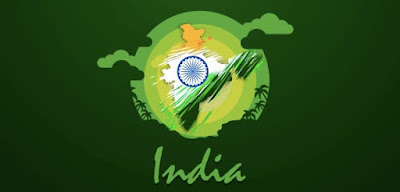The rituals and myths after death ( the world of unknown and fear Part-2)
Note- this article is not complete as the research is yet ongoing so as to provide precise, crisp and exact information.
How does Indian culture handle death
Most Hindus claim that humans are stuck in a samsara loop of death and rebirth. When someone dies, their atman reincarnates in a new body. Some people believe that rebirth occurs immediately after death, while others
believe that atman exists in other realms. Hindus believe that an atman will spend time in swarg or narak before reincarnating. Karma, or 'intentional conduct,' is a Hindu belief. Many people assume that the atman's rebirth is decided by good or poor behaviour in life that leads to positive or negative merit. Some Hindus claim that humans will reincarnate as animals, and that reincarnation from human to animal form happens only when an atman has repeatedly refused to learn lessons in human form.
Following the teachings of the scriptures would lead to moksha in the end. Moksha is represented in some Hindu scriptures as the atman being absorbed with Brahman, the root of all atmans. Moksha is represented in other Hindu scriptures as residing in the domain of a personal Deity.
How other cultures deal with death
- Maori
The European aversion to bodies varies significantly from Maori tradition. A person's body is displayed in an open coffin for a three-day tangi, which is usually held on a marae but is increasingly being held in public halls or private homes.
A person's spirit, or wairua, is said to live until they are laid to rest in Maori belief. This is why, in the tangi, someone should always keep an eye on the body. Visitors pay their respects after the body is welcomed into the marae. In honour of the deceased, speeches are given and songs are sung. The body is taken to the urupa (cemetery) to be buried on the third day after a funeral, which is normally presided over by a minister or tohunga.
The body was usually exhumed and the bones reinterred after some time, but the hura kohatu ritual, in which a gravestone is unveiled a year after the burial, has increasingly replaced this procedure.
- Judaism
Unless visitors have a long distance to drive, Jewish burials are usually held within a day of death, similar to Islam and Hinduism. There will be no public viewing of the body since the funeral is a private family matter.
A time of deep mourning known as shiva is included in Jewish post-death ceremonies, during which all trivial issues are abandoned. The family mourns at home for seven days after the funeral, and friends drop by to share their condolences. The door is left open, and a memorial candle is lit for the rest of the week. To prevent vanity, all of the mirrors in the house have been turned around or hidden.
Shaving and other forms of personal grooming are often frowned upon because they are viewed as a diversion from grief.
Sitting shiva is a tradition in which family members sit on low stools to signify being 'brought low' by the death of a loved one. Mourners wear a ripped black ribbon around their necks to represent a broken heart, and some people don't wear shoes during shiva.
- Cristianity
(To be filled)
- Islam
(To be filled)
- Elsewhere
Death, on the other hand, isn't necessarily a sombre affair. Funerals in Ghana are lavish group affairs to mark the deceased's passage into the afterlife, and they are often advertised on billboards.
Although Jewish coffins are simple and wooden, 'fantasy coffins' are extremely popular in Ghana's Greater Accra Region, where it's not uncommon to bury someone in a massive replica Coke bottle, race car, or cigarette packet. Caskets are handcrafted by local carpenters to represent the deceased's life, passions, and social standing





Comments
Post a Comment